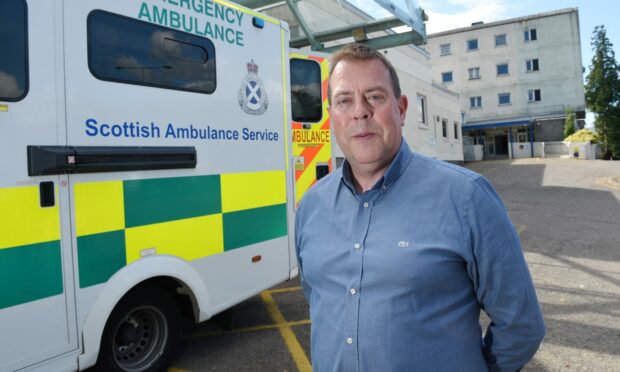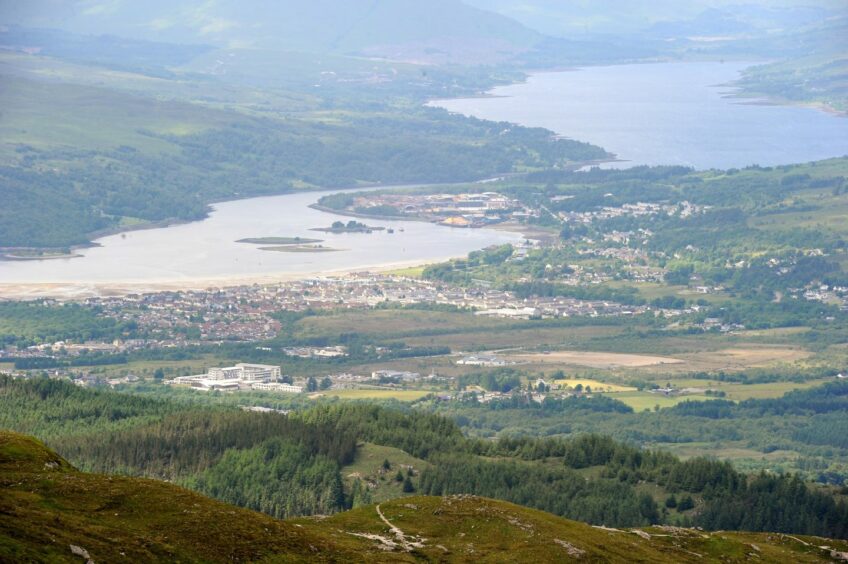Staff working at The Belford Hospital in Fort William need to prepare for every eventuality with the population in the region almost tripling during the busy tourist season.
For each shift, there needs to be enough staff working on-site to take care of the patients and to continue delivering high levels of care.
In the second part of our series on the rural general hospital, we find out why the difficulties of recruiting staff has become one of its biggest challenges.
You can’t help but be impressed by the dramatic scenery when you visit Fort William, a bustling town based along the shores of Loch Linnhe.
It’s got so much to offer, particularly for outdoor enthusiasts.
But the hospital in the town is struggling to attract staff.
And Dr Brian Tregaskis, a consultant at the hospital, believes the on-call shifts are the main problem.
Consultants at the Belford can work one in four weekends a month and one in three weeknights.
“Nobody is going to do that anymore,” he explains.
Thirty years ago, when Brian first started working at the hospital, it was the “nature of the job” that you worked every second weekend. But times have changed.
“I didn’t find it particularly arduous because I was young and I had a young family,” he says. “You could bring a young family up in an area like this.
“You were home with them except for when you were at the hospital. But nowadays nobody is going to touch that with a barge pole.”
And due to staff shortages over the pandemic Brian, who is near retirement age, found himself working those “tiring” one-in-two weekend shifts yet again.
And there’s a shortage of accommodation…
Managers are now competing for staff with larger city hospitals where medics might only need to work one on-call shift a month.
“The smaller the place, the fewer people you have and the more frequently they have to contribute,” deputy medical director Dr Rob Cargill explains.
“I came from a hospital in the central belt just over a year ago and trying to sustain a rota of that frequency with that amount of people has not been attractive.”
The lack of accommodation also poses a problem and even staff recruited to work in senior roles find they can’t afford a home in the area.
Many properties in Lochaber have been turned into holiday homes. The housing crisis is so bad that key workers have even been forced to sleep in their vans.
Rural hospital staff: What could solve the problem?
Incentive schemes could be introduced for staff working in rural areas.
This could mean higher salaries, or extra time off.
In other countries, such as New Zealand, medical staff have been given additional allowances for working in rural areas.
Other incentives such as the opportunity of taking on a three-month sabbatical every five years also helped attract staff to rural jobs.
The Scottish Government approved a financial incentive for doctors working in island communities but it’s not available for rural staff on the mainland.
The Scottish Government says it recognises the problems hospitals in remote locations face and is currently working on a rural workforce recruitment strategy.
It’s hoped this will be developed and completed by the end of 2024.
A spokeswoman added that consultants working in the NHS in Scotland are the best paid in the UK with a basic salary at the top of the scale of over £121,000.
The British Medical Association highlights that there’s a shortage of senior doctors in Scotland.
Official stats show there are 436 vacancies for consultants across the country – about 7% of the senior doctor workforce.
A BMA Scotland spokeswoman said: “We need serious steps to be taken in Scotland to make working as a doctor an appealing career choice, and both government and employers need to show that staff are valued.
“That means a real focused drive on not only recruitment of new staff but also crucially retention of the current workforce – through improved work-life balance, and a concentrated effort on improving the mental and physical wellbeing of staff.”
Is NHS Highland concerned about relying on expensive locums?
The rural hospital could continue facing challenges recruiting for some time yet.
In the meantime, managers are faced with ensuring there’s enough staff to cover shifts through hiring locums.
Mike Hayward, NHS Highland’s deputy chief officer for acute services, describes it as a “necessary evil”.
“It’s me who has to sign off and agree those locums,” he said. “It pains me to do it but if I don’t then we don’t have doctors sometimes to cover the shifts.
“We’re not reckless; we are very innovative and we’re quite creative and we change rosters and rotas at the last minute.
“It’s not like we just throw money down the drain.”
He stressed hospitals across the UK all need locum doctors and nurses to cover shifts and that he worked with agencies to keep the costs down.
“Sometimes there’s the view that we’re not actively recruiting and all we do is just pay people whatever they ask for,” he said.
“You can rest assured I have a lot of debate backwards and forwards with agencies when they’re asking me for silly money and I say no, unless we have absolutely nowhere else to go.”
Mike is keen to build a permanent team of staff at the rural hospital who all know each other to give them more stability.
“I need a happy team that are working together for the long term,” he said.
“I have no desire to run a hospital with the number of locums that we have and nor does anyone.”





